They have been doing this for more than 1000 years,using the same ancient techniques,with the Shinto temple now up to its 63rd iteration.
The ceremony,which preserves the shrine’s original architecture and traditions,poses a similar question to the paradox of grandfather’s axe – if both blade and handle are replaced over time,is it still the same axe?
The Melbourne Cricket Ground is this city’s version of these tales. It was first established on a Wurundjeri gathering place 170 years ago and since then,18 grandstands have been erected,including four members’ pavilions.
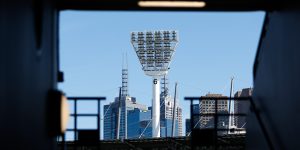
The light towers are some of the oldest parts of the MCG.Getty Images
Every two or three decades,another piece is demolished and rebuilt – most recently more than half of it for the Commonwealth Games in 2006. In generational terms,its age is a mix of Millennial and Gen Z.
And there’s more renewal on the way. The Shane Warne Stand,which opened as the Great Southern Stand in 1991,is the next in line for the.
“The oldest parts of the MCG are the picket fence and light towers,” says former Collingwood president Eddie McGuire,who is advocating for a roof over the ground as part of the next upgrade.
“It’s an arms race. Any stand that went up before Wi-Fi may as well be Noah’s Ark. These things have a lifespan of 30 years.”
It’s a different story at other historic grounds.
While the Sydney Cricket Ground retains its and the Adelaide Oval has its famous scoreboard and hill,the MCG has no obvious heritage features,aside from the names on the stands.
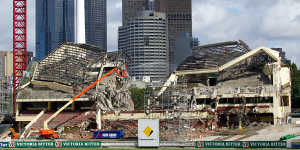
The members’ pavilion at the MCG when it was torn down in 2004.Ray Kennedy
Despite this constant pouring of concrete,the MCG is rarely accused of being soulless. Spiritual connection is found in familiar rituals:the walk through Yarra Park,the roar of the crowd,the retelling of old stories.
Such modernity is unusual for old Melbourne. Its equivalent landmarks – the Royal Exhibition Building (1880),Parliament House (1892),Flinders Street Station (1909) – are frozen in time in comparison.
“There’s no doubt the MCG is a very special place for Melburnians and Victorians,” says former Melbourne Cricket Club chief executive Stephen Gough.
“Not many places can have that longevity and entrench yourself in a city that became very focused on sport.”
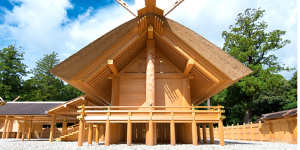
The Grand Shrine of Ise is torn down and rebuilt every two decades.isejingu.or.jp
While other cities and states struggle with the political and financial cost of stadiums,the MCG remains the place against which everything else is measured.
Its capacity of 100,000 is easily the biggest in Australia and among the largest in the world. India’s Narendra Modi Stadium holds the title with 132,000.

Those seats are regularly full too,with a packed sporting calendar of cricket and football,plus rugby league,rugby union and soccer. It boasts two of the flagships of Australian sport:the AFL grand final and Boxing Day Test.
,such as the Taylor Swift tour that drew 96,000 people for three successive nights – the singer’s biggest ever attendance.
Swift’s star power showcased the MCG to the world,particularly its size,proximity to the city and public transport connections.
The lack of cars parked around the ground,a feature rather than a drawback,was a source of social media amazement.
The true cost of a new stadium
All of this is in stark contrast to the problems facing Queensland and Tasmania,two states grappling with replacing or building high-quality venues during a cost-of-living crisis.

Taylor Swift performs the first of three concerts at the MCG.Jason South
The Brisbane 2032 Olympics,after the state Labor government controversially rejected an independent panel review that called for a new $3.4 billion venue in Victoria Point.
The MCG was held up as a model for the proposed 55,000-seat stadium,which would have been built on an old golf course.
“[It] has significant potential to create something truly unique in Queensland and to rival iconic parkland stadiums,such as the MCG in Melbourne,” the review said.
The same review the 42,000-seat Gabba for the Games,which would cost up to $3 billion,as it was not good value for money.
“Rebuilding the ageing Gabba requires substantial investment and,even when complete,will still not deliver a truly international standard stadium due to the constraints of the site,” the review found.

Instead,the state government has pledged to put on a low-cost Olympics,with $1.6 billion spent on sprucing up the Queensland Sport and Athletic Centre.
The 1982 Commonwealth Games-era venue would hold 40,000 people in temporary stands,reverting to a 14,000-seat athletics venue post-Games.
“I cannot support building a brand-new stadium while Queenslanders are doing it as tough as I know that they are,” said state Premier Steven Miles.
Suncorp Stadium,the home of the Brisbane Broncos with a capacity of 52,500,will also be refurbished and host the opening and closing ceremonies.
The thorny issue is now an election battleground,with the.

In Tasmania,the proposal to build a new home for the incoming Devils AFL team by 2029.
The Liberal government’s deal with the AFL for the new licence included a requirement for a new 23,000-seat stadium at Macquarie Point,prompting outcry over the budgeted cost of $715 million.
The ensuing tug-of-war between Liberal,Labor and Greens has raised questions about whether the stadium will ever be built. The AFL has repeatedly insisted:no stadium,no team.

NSW has also had similar problems,with – formerly Sydney Football Stadium – at cost of $828 million.
“We almost lost an election on the construction of this stadium,” said ex-NSW premier Dominic Perrottet when it opened.
The Victorian Labor government has felt a different kind of pain,after it sensationally backed out of the 2026 Commonwealth Gamesof putting on sporting events at regional venues – and not the MCG – blew out to $6 billion.
There has been less furore over the state government spending $225 million to upgrade Marvel Stadium in Docklands,the MCG’s local competitor.
In Western Australia,controversy over the cost and location of the $1.6 billion 60,000-seat Optus Stadium in Perth appears to have faded,.
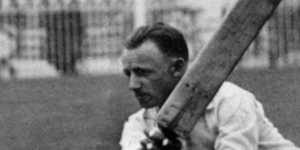
Don Bradman at the MCG in 1937.
With all of that potential political fallout,the question is why governments go anywhere near the idea of new stadiums.
“It’s lazy politics by politicians who think there are votes in it,” says political strategist Kos Samaras.
“If it was in a time of economic boom,people wouldn’t pay much attention to it. But it’s the wrong time.”
How it happened
There are a few forks in the road where the MCG may not have become what it is today. It could be seen as luck or incredible foresight.
One such decision was by Governor Charles Latrobe in 1853 to allow the MCC to set up its home on an old police horse agistment paddock in Yarra Park.
Putting a price on that land in East Melbourne now,,would have a real estate agent seeing stars.

Steve Waugh at the MCG in 1990 as the Great Southern Stand was being built.The Age
Regular development of the ground over the years may also not have happened if other choices were made.
Original plans for the 1956 Olympics included proposals to or renovate Princes Park.
In the end,the state government chose to upgrade the MCG instead because it was cheaper and the 43,000-capacity Olympic stand was installed.
Another key moment was the construction of the Great Southern Stand in the 1990s,which was brought on after the previous grandstand was found to have concrete cancer.
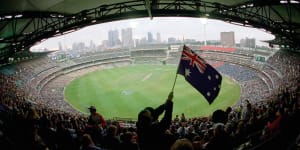
The view from the Great Southern Stand in the 1990s.Craig Sillitoe
The MCC couldn’t fund it alone,so it went into a partnership with the AFL,who had been agitating at the time for the grand final to be moved to its own ground,Waverley Park,to get a better cut of the revenue.
The Labor state government had made it clear that the grand final must stay at the MCG.
With the writing on the wall,the two warring bodies came together and joined forces,kicking the AFL and MCG into a new era. Waverley was later demolished.
“Collingwood leaves Victoria Park because of that stand,” says McGuire. “Essendon became really big because of that stand.”
Why the MCG works
There are some financial realities when assessing other proposed stadiums trying to mimic the MCG.
One of these is the MCC’s enormous membership base,with over 100,000 members paying annual fees up to $844 plus another quarter of a million sitting on the waiting list.
Then there’s the amount the ground gets used:a baseline of 47 AFL matches at the MCG this year,not including finals. Plus cricket,other sports and big music events,which are cream on top.

In 2022/23,four million people attended events at the MCG. The MCC’s total revenue for that year was $154 million. The corporate facilities are huge cash generators.
All of this means that debt taken out to pay for redevelopment can be repaid.
The loan for the $150 million Great Southern Stand is off the books,while the club’s contribution to Northern Stand will soon be paid off.
“They’ve been living within their means while slowly upgrading facilities to suit the patrons,” says former Victorian premier Jeff Kennett,whose government built Marvel Stadium.
Politically,the MCG also has a degree of separation from Spring Street. The state government-appointed MCG Trust delegates the MCC to run the ground,which is a public asset.
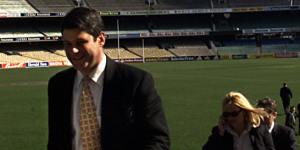
Then-premier Steve Bracks at an announcement to redevelop half of the MCG for the Commonwealth Games.Wayne Taylor
Former Victorian sports minister Justin Madden,who oversaw the $465 million Northern Stand redevelopment,says Brisbane needs to be clear about what a new venue would be used for post-Olympics.
With one AFL team in the city plus cricket in the summer,it’s hard to see how the numbers stack up.
It would be a big bet in the hope of landing someone like Swift,who passed over Brisbane for Melbourne and Sydney.
“You could build it and they may not come,” Madden says. “You’ve got to be sure.”
The MCC declined a request for an interview and did not respond toThe Sunday Age’s questions.
The Morning Edition newsletter is our guide to the day’s most important and interesting stories,analysis and insights..
